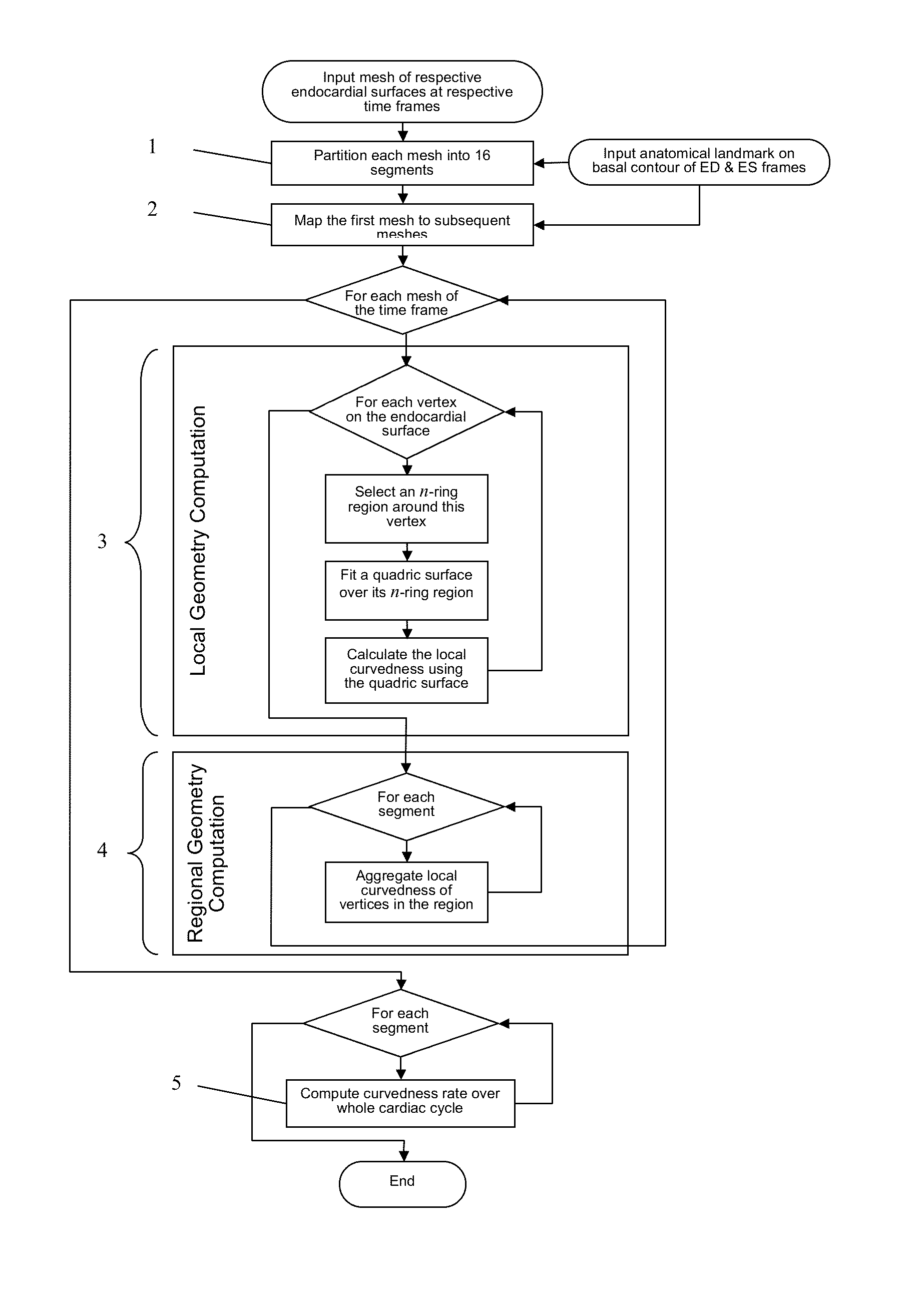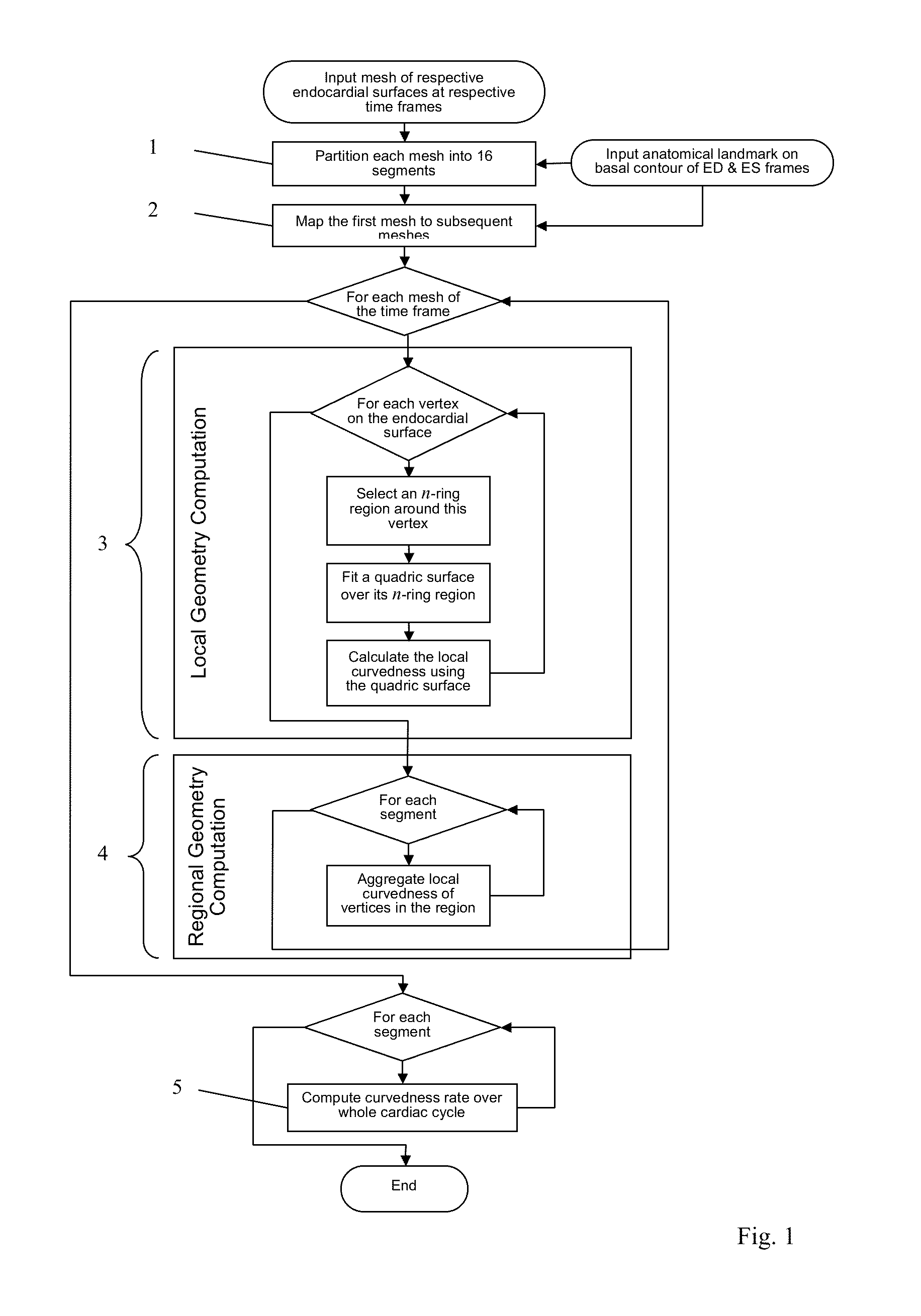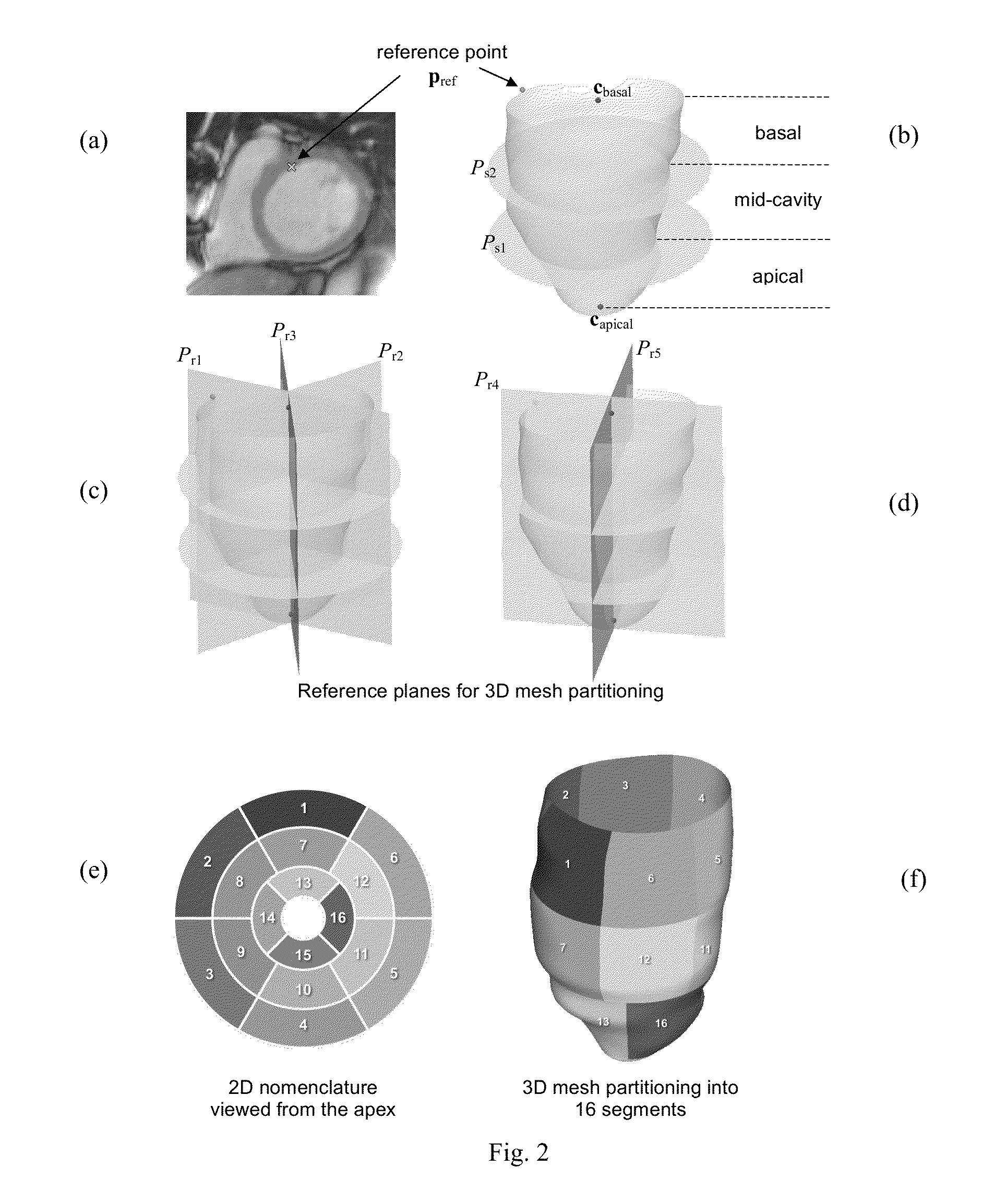Quantifying curvature of biological structures from imaging data
- Summary
- Abstract
- Description
- Claims
- Application Information
AI Technical Summary
Benefits of technology
Problems solved by technology
Method used
Image
Examples
Embodiment Construction
[0034]Referring firstly to FIG. 1, a method which is an embodiment of the invention is illustrated as a flow diagram. The method may be performed by a computer system, such as a standard generally programmed computer, having a data storage device storing program instructions to implement the method steps. The workflow performs very fast (in human terms, substantially instantaneous) shape quantitation.
[0035]There are two inputs to the system:[0036](i) a set of surface meshes representing the instantaneous shape of the endocardial surface of the left ventricle (LV) at each of a set of respective instants (“time frames”). These surface meshes are derived from MRI data captured at the respective times. There are many existing ways of generating the input meshes. To illustrate, FIG. 4(a) shows the MRI data for a given instant. FIG. 4(b) shows delineated contours produced from the MRI data. FIG. 4(c) shows the mesh for the corresponding instant, which is the input to the embodiment.[0037]...
PUM
 Login to View More
Login to View More Abstract
Description
Claims
Application Information
 Login to View More
Login to View More - R&D
- Intellectual Property
- Life Sciences
- Materials
- Tech Scout
- Unparalleled Data Quality
- Higher Quality Content
- 60% Fewer Hallucinations
Browse by: Latest US Patents, China's latest patents, Technical Efficacy Thesaurus, Application Domain, Technology Topic, Popular Technical Reports.
© 2025 PatSnap. All rights reserved.Legal|Privacy policy|Modern Slavery Act Transparency Statement|Sitemap|About US| Contact US: help@patsnap.com



